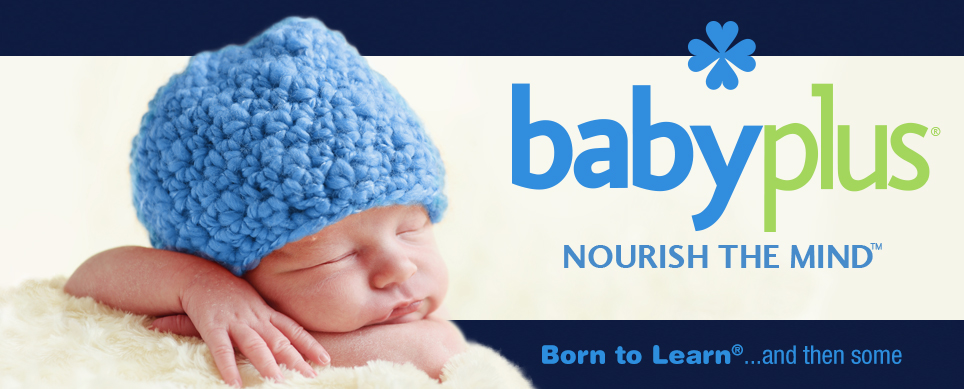-
+
-
Food
+
Food
-
Feeding
+
Feeding
Brands in Catagory
-
Health
+
Health
Brands in Catagory
-
Outing
+
Outing
Brands in Catagory
-
Home
+
Home
Brands in Catagory
-
Sleeping
+
Sleeping
Brands in Catagory
-
Education
+
Education
Brands in Catagory
-
Book / CD
+
Book / CD
Brands in Catagory
-
Playing
+
Playing
Brands in Catagory
-
Wearing
+
Wearing
Brands in Catagory
-
Cartoon Characters
+
Cartoon Characters
Brands in Catagory
-
Jellycat Station
+
Jellycat Station
-
Gifts
+
-
My Pets
+
-
Clearance
- Swim Wear Clearance
- Sleeping Clearance
- Carseat Clearance
- Wall Decorations
- Baby Carrier Clearance
- Feeding Clearance
- Stroller Clearance
- Clothing Clearance
- Book Clearance
- Bathing/Toilet
- Clearance Toys
- Bag / Luggage
- Books/CDs
- Electronic / Electric Item
- Aprica
- B&H
- Babisil
- Baby-Nova
- BabyFEHN
- Babymate
- Bambino Mio
- Barron's
- BEABA
- Belly Bandit
- Benbat
- Bibetta
- Bloom
- Bravado
- California Bear
- Charlie Banana
- Clementoni
- Cuski
- Cybex
- Diono
- Ecomom
- Egmont
- Ergobaby
- Grubby Bubby
- GUND
- I-Angel
- iPlay
- Itzy Ritzy
- Ju-Ju-Be
- Kee-Ka
- Koolsun
- Krooom
- Label Label
- Lascal
- LÍLLÉBaby
- Lisciani
- LittleLife
- Love To Dream
- Lucky Baby
- Medela
- Melissa & Doug
- Moo Moo Kow
- Mum2Mum
- Others
- OXO
- Peaceable Kingdom
- Peacock
- PearHead
- Pediped
- Petite Creations
- Philips Avent
- Plage
- Playtex
- Precidio
- Scholastic
- Skip*Hop
- The Cuties and Pal
- Thermos
- Tiny Love
- Tommee Tippee
- TotSeat
- Trunki
- Tum Tum
- Twin Sisters
- Under the Nile
- Usborne
- Vulli
- Zoli
Clearance Brands:
BabyPlus - Prenatal Education System - BabyPlus






Free Local Delivery (HK) for Orders over HK300
Extra 2% Off - Payment by FPS (HK)
 Product Code: BPL-677084069843
Product Code: BPL-677084069843Availability: Currently Not Available
Click Here:
Explore for Our New Arrivals!
BabyPlus® - Prenatal Education System®
What is BabyPlus?
BabyPlus is a series of 16 scientifically designed rhythmic sounds that resemble a mother's heartbeat. The rhythm of the sounds increases incrementally and sequentially as the pregnancy progresses. The BabyPlus sound pattern introduces your child to a sequential learning process, built upon the natural rhythms of their own environment.
This "auditory exercise" strengthens brain connections during the developmental time period when the advantages will be most significant for a child. BabyPlus is the first educational tool designed for prenatal use that has been proven effective. BabyPlus children have an intellectual, developmental, creative, and emotional advantage from the time they are born.

Why using Babyplus?
Your baby can very clearly hear these rhythmic sounds. She/he learns to discriminate between the sound coming from the mother and those from BabyPlus. In other words, the learning process has begun. Your baby's brain begins to accelerate the rate at which it compares and contrasts sounds. This process builds your baby's memory for greater capacity and function throughout life.
In the prenatal period, the brain is at its most receptive developmental stage. By stimulating brain cells and their connecting elements during this crucial developmental period, independent studies have proven that the overall brain structure is stronger at birth and this benefit continues throughout the life of the child.
This prenatal curriculum introduces your developing baby to learning in the only true language of the prenatal environment, the maternal heartbeat. The spoken word is too difficult for the developing child to understand and music is too complex. However, scientifically conducted studies show that the prenatal child recognizes the maternal heartbeat and can learn to differentiate progressively altered versions of that sound.
How to Use BabyPlus
The BabyPlus Prenatal Education System is safe and easy to use. It is a series of 16 audio lessons contained in our patented curriculum.
For optimal learning, we recommend that you begin using the BabyPlus between the 18th and 32nd week of pregnancy. You will use the BabyPlus for 1 hour in the morning and 1 hour in the evening.
You simply place the unit inside the fabric pouch. With the speaker pointed inward, place the unit on your abdomen at mid-level and fasten the strap around your waist. The volume of BabyPlus is preset at a precise, safe level.
MIT study finds neurons that hum together encode new information. Synchronized brain waves enable rapid learning:
|
Once I learned that fetal EEG is identical with maternal/fetal heartbeat rhythms (and postnatal alpha rhythm our basic brainwave), this became the core rationale for the BabyPlus curriculum . . . please reread pages 79-86 inLearning Before Birth. This discovery has BabyPlus written all over it--explaining prelearning's actual mechanism. Consider that fetal EEG synchronizes at the curricularized rates (confirmed by Van de Carr), imprinting greater and coordinated rhythmicity (imprinting processing) during the critical developmental stage--before postnatal conscious learning commences a more tedious process--therefore preparing the brain for increased levels of complexity throughout life, primed for novelty. Important! Anne Trafton | MIT News Office, June 12, 2014 |
 |
The human mind can rapidly absorb and analyze new information as it flits from thought to thought. These quickly changing brain states may be encoded by synchronization of brain waves across different brain regions, according to a new study from MIT neuroscientists.
The researchers found that as monkeys learn to categorize different patterns of dots, two brain areas involved in learning — the prefrontal cortex and the striatum — synchronize their brain waves to form new communication circuits.
“We’re seeing direct evidence for the interactions between these two systems during learning, which hasn’t been seen before. Category-learning results in new functional circuits between these two areas, and these functional circuits are rhythm-based, which is key because that’s a relatively new concept in systems neuroscience,” says Earl Miller, the Picower Professor of Neuroscience at MIT and senior author of the study, which appears in the June 12 issue of Neuron.
There are millions of neurons in the brain, each producing its own electrical signals. These combined signals generate oscillations known as brain waves, which can be measured by electroencephalography (EEG). The research team focused on EEG patterns from the prefrontal cortex —the seat of the brain’s executive control system — and the striatum, which controls habit formation.
The phenomenon of brain-wave synchronization likely precedes the changes in synapses, or connections between neurons, believed to underlie learning and long-term memory formation, Miller says. That process, known as synaptic plasticity, is too time-consuming to account for the human mind’s flexibility, he believes.
“If you can change your thoughts from moment to moment, you can’t be doing it by constantly making new connections and breaking them apart in your brain. Plasticity doesn’t happen on that kind of time scale,” says Miller, who is a member of MIT’s Picower Institute for Learning and Memory. “There’s got to be some way of dynamically establishing circuits to correspond to the thoughts we’re having in this moment, and then if we change our minds a moment later, those circuits break apart somehow. We think synchronized brain waves may be the way the brain does it.”
The paper’s lead author is former Picower Institute postdoc Evan Antzoulatos, who is now at the University of California at Davis.
Humming together
Miller’s lab has previously shown that during category-learning, neurons in the striatum become active early, followed by slower activation of neurons in the prefrontal cortex. “The striatum learns very simple things really quickly, and then its output trains the prefrontal cortex to gradually pick up on the bigger picture,” Miller says. “The striatum learns the pieces of the puzzle, and then the prefrontal cortex puts the pieces of the puzzle together.”
In the new study, the researchers wanted to investigate whether this activity pattern actually reflects communication between the prefrontal cortex and striatum, or if each region is working independently. To do this, they measured EEG signals as monkeys learned to assign patterns of dots into one of two categories.
At first, the animals were shown just two different examples, or “exemplars,” from each category. After each round, the number of exemplars was doubled. In the early stages, the animals could simply memorize which exemplars belonged to each category. However, the number of exemplars eventually became too large for the animals to memorize all of them, and they began to learn the general traits that characterized each category.
By the end of the experiment, when the researchers were showing 256 novel exemplars, the monkeys were able to categorize all of them correctly.
As the monkeys shifted from rote memorization to learning the categories, the researchers saw a corresponding shift in EEG patterns. Brain waves known as “beta bands,” produced independently by the prefrontal cortex and the striatum, began to synchronize with each other. This suggests that a communication circuit is forming between the two regions, Miller says.
“There is some unknown mechanism that allows these resonance patterns to form, and these circuits start humming together,” he says. “That humming may then foster subsequent long-term plasticity changes in the brain, so real anatomical circuits can form. But the first thing that happens is they start humming together.”
A little later, as an animal nailed down the two categories, two separate circuits formed between the striatum and prefrontal cortex, each corresponding to one of the categories.
“This is the first paper that provides data suggesting that coupling in the beta-band between prefrontal cortex and striatum may play a key role in category-formation. In addition to revealing a novel mechanism involved in category-learning, the results also contribute to better understanding of the significance of coupled beta-band oscillations in the brain,” says Andreas Engel, a professor of physiology at the University Medical Center Hamburg-Eppendorf in Germany.
“Expanding your knowledge”
Previous studies have shown that during cognitively demanding tasks, there is increased synchrony between the frontal cortex and visual cortex, but Miller’s lab is the first to show specific patterns of synchrony linked to specific thoughts.
Miller and Antzoulatos also showed that once the prefrontal cortex learns the categories and sends them to the striatum, they undergo further modification as new information comes in, allowing more expansive learning to take place. This iteration can occur over and over.
“That’s how you get the open-ended nature of human thought. You keep expanding your knowledge,” Miller says. “The prefrontal cortex learning the categories isn’t the end of the game. The cortex is learning these new categories and then forming circuits that can send the categories down to the striatum as if it’s just brand-new material for the brain to elaborate on.”
In follow-up studies, the researchers are now looking at how the brain learns more abstract categories, and how activity in the striatum and prefrontal cortex might reflect that type of abstraction.
The research was funded by the National Institute of Mental Head
Write a review
Your Name:Your Review: Note: HTML is not translated!
Rating: Bad Good

























